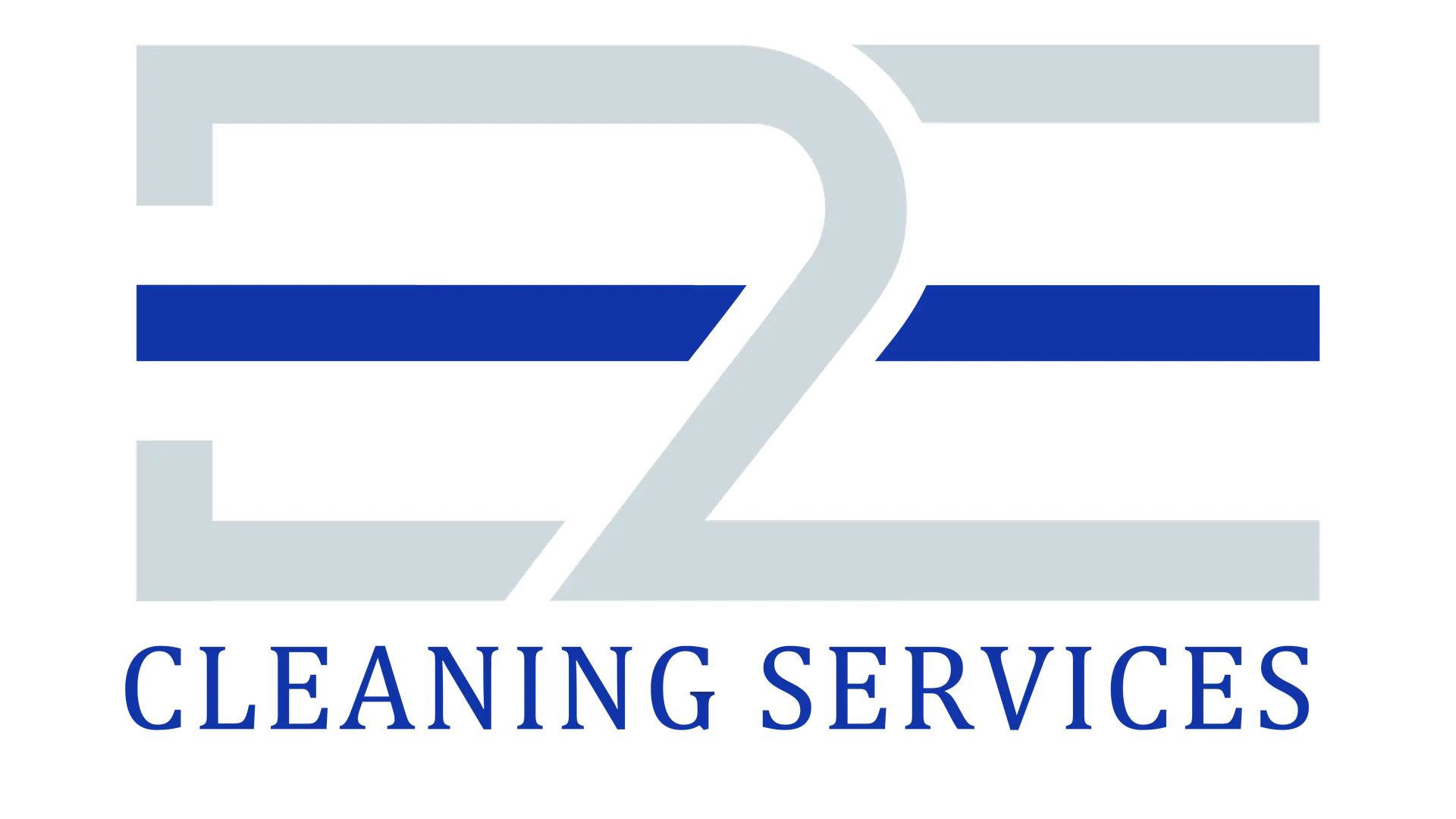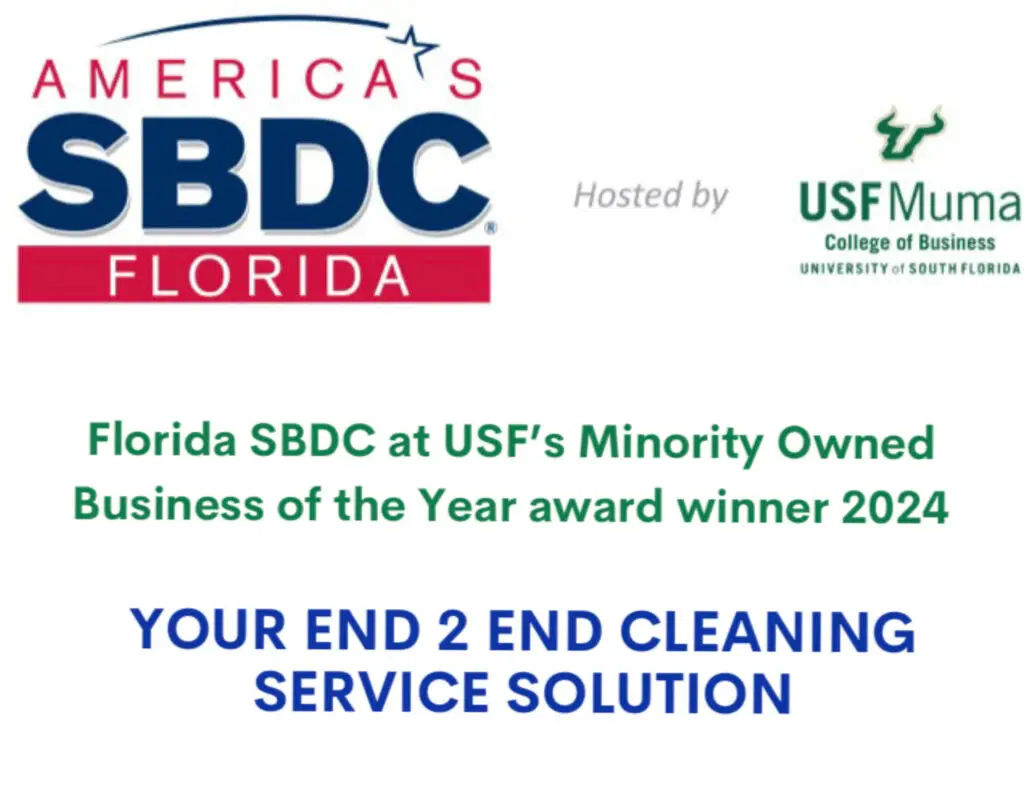In the competitive business environment of Florida, more and more companies are learning that being environmentally responsible and profitable go hand in hand. Outside of the frame of ethical choice, green cleaning—practicing cleaning using non toxic, sustainable chemicals and methods—has become a strategic investment.
In particular, Florida organizations have a compelling argument to adopt eco-friendly cleaning protocols because of the state’s specific ecological vulnerabilities, its tourism dependent economy, and increasing environmental awareness among consumers. Enabling environmental advances goes far beyond obvious environmental benefits: while forward thinking companies experience ongoing financial return, they also realize return on virtually all other dimensions; workforce health; continued environmental preservation; and maintaining a brand that is aligned with their principles and purpose.
In this article I explore how sustainable cleaning practices generate value directly in each of these four critical business metrics.
Understanding Green Cleaning for Businesses
Definition and Key Principles
Green cleaning is not just a matter of replacing single products; it is a whole approach to cleanliness without ecologic damage. The biodegradable product with limited chemical exists based on fundamental principles; the conservation of water and energy; disposal reduction through sustainable packaging; drainage and sewer management; and protection of indoor air quality. The proposed framework is comprehensive in that human and environmental health is placed at the top of the pyramid without compromising cleaning efficacy.
Common Green Cleaning Products and Methods
The arsenal of green cleaning solutions has grown exponentially in recent years:
- The use of microfiber technology has revolutionized cleaning efficiency by capturing much more particles than traditional cotton and needing less chemical agents.
- Natural biological processes are used to enzymatically break down organic matter.
- Ordinary tap water is transformed into a powerful sanitizer through the process of electrolysis in electrolyzed water systems.
- Conventionally used systems recirculate the particulates, but HEPA filtration vacuum systems capture these particles and thereby improve air quality during the cleaning process.
Industry Certifications and Standards in Florida
To demonstrate credibility with their green cleaning initiatives, Florida businesses should be familiar with certifications recognized for healthy and sustainability.
- Product environmental claims are tested by Green Seal and EcoLogo certifications.
- The GREENGUARD certification addresses indoor air quality impacts specifically.
- LEED (Leadership in Energy and Environmental Design) certification, which is used for comprehensive organizational commitment to green cleaning,
Green cleaning is considered an integral component of overall building sustainability. Furthermore, the Florida Department of Environmental Protection awards the Florida Green Business designation to acknowledge the comprehensive sustainability efforts of local businesses.
Financial ROI of Green Cleaning
Initial Investment vs. Long-Term Savings
Typically, implementation of green cleaning tends to involve some initial capital outlay related to equipment upgrades, staff training, and these same ‘green’ products tend to be more expensive.
However, cost analyses always show break even points within 12–24 months for most businesses.
Microfiber tools, which boast a lifespan 10 times longer than typical options, combined with concentrated product formulations that reduce the need for frequent replacements, and the use of less micro-packaging, collectively contribute to a quicker return on investment.
Reduced Water and Energy Consumption
Water efficient techniques are included in green cleaning methodologies which are measurable utility savings. Traditional methods of cleaning can be cut by up to 70 percent when using low moisture cleaning systems.
Cold water cleaning formulations are energy conservation because they eliminate the heating costs of hot water cleaning. Comprehensive green cleaning programs in commercial buildings report annual utility cost savings averaging 5-8% (significant in Florida’s climate where an important component of a building’s operational costs involves cooling and water).
Explore how our comprehensive Pressure Cleaning Services. Protecting Water Resources
Lower Disposal Costs and Potential Tax Incentives
Waste reduction as a priority for waste management in Florida is increasingly reflected in waste disposal fee structures that provide for tiered charges. Green cleaning products produce a smaller amount of waste, since they are less concentrated formulations, shipped in reduced packaging, meaning that there are lower disposal costs.
Moreover, businesses can be eligible for the Florida Voluntary Cleanup Tax Credit program if all-around sustainability initiatives are in place and green cleaning is a part of them—allowing them to be reimbursed up to 50% of eligible costs.
Case Studies of Florida Businesses Seeing Positive ROI
Soon after the Pelican Grand Resort in Fort Lauderdale, FL switched to green cleaning, it documented savings of 12 percent on overall cleaning expenses at 18 months. SunTrust Financial Center in Tampa reduced its purchases of cleaning chemicals by 62 percent without compromising cleanliness standards. The three year ROI for Orlando’s Lake Nona Medical Center’s green cleaning program was calculated at 147% when considering reduced employee absenteeism and lower insurance premiums due to improved workplace safety metrics.
Employee Health Benefits
Reduction in Respiratory Issues and Allergies
Conventional cleaning chemicals frequently contain volatile organic compounds (VOCs) that become airborne during application, potentially triggering asthma, allergic reactions, and respiratory inflammation.
Florida businesses that have transitioned to green cleaning report average reductions of 30-45% in employee-reported respiratory complaints. This improvement is particularly pronounced in environments where air recirculation is common, such as offices, healthcare facilities, and educational institutions.
Decreased Sick Days and Improved Productivity
Removing harsh chemical irritants, so descriptively, means there is a direct correlation to workforce attendance metrics. In organizations that utilize comprehensive green cleaning programs, have documented that there are 2–4 fewer sick days per employee each year and thus, a significant improvement in terms of productivity.
Using green cleaning protocols resulted in 27 percent fewer lost work hours in departments at the University of Illinois due to illness, compared with work performed by conventional cleaning methods. Execution of green cleaning often results in productivity gains that surpass directly cost savings achieved after its implementation.
Better Indoor Air Quality Measurements
Objective validation that green cleaning improves indoor air quality is available in terms of improved levels of quantifiable parameters. Results from Florida office environment studies have found up to 80 percent reduction of airborne VOCs after green cleaning implementation. Measurements of the amount of the particulate matter also show improvements, with the HEPA, filtering of the allergens and irritants that other systems would recirculate. In Florida’s humid climate, these improvements are especially useful as indoor air quality problems are exacerbated.
Employee Satisfaction and Retention Improvements
In addition to measurable health metrics, green cleaning is an important part of workplace satisfaction, a growing factor of recruitment and retention. According to surveys run with employees from various Florida industries, 72% of respondents would include environmental responsibility as an element in forming a perception of employer desirability.
However, organizations that communicate green cleaning initiatives are indeed making, as part of a total commitment to sustainability, have their employee engagement scores rise and turnover rates fall.
Environmental Impact for Florida’s Ecosystem
Reduced Chemical Runoff into Local Waterways
Due to Florida’s vast watershed systems and high water table, it is specially susceptible to chemical contamination. When conventional cleaning products, such as those containing phosphates, chlorine and ammonia compounds, are washed down the drain they will contribute to water quality degradation.
The impact of this is minimal because of the use of green cleaning products with biodegradability and reduced toxicity. Measurements of cleaning chemical residues downstream from facilities that have instituted green cleaning show measurable reductions in those chemical residues.
Protection of Florida’s Unique Biodiversity
Florida state is exceptional in biodiversity, and chemical pollution is one of the many threats to this. Ecosystems contaminated with harsh cleaning agents can have negative effects on aquatic life cycles and harsh impacts on sensitive habitats.
Businesses can contribute to the preservation of habitat by replacing chemical cleaning products with environmentally compatible alternatives. For hospitality, healthcare and food service type operations operating near sensitive ecological areas such as wetlands, estuaries and coast areas, this switch is particularly relevant.
Lower Carbon Footprint and Sustainability Metrics
In addition to the product chemistry, the carbon impact of cleaning operations is further expanded to include manufacturing, transportation and disposal phases. In general, green cleaning products are produced with less energy intensive production methods and generate less greenhouse gas emissions over their lifecycle.
When Florida businesses document their sustainability metrics, they report 15% to 30% improvement in cleaning related carbon footprint reduction by switching to eco-cleaning methods and supporting their corporate sustainability goal.
For further enhance these improvements, businesses can consider the following methods:
- Adopt Green Cleaning Products: Use biodegradable, non-toxic cleaning agents that reduce harmful emissions and are safer for the environment.
- Implement Energy-Efficient Equipment: Invest in energy-efficient cleaning equipment, such as electric or hybrid vacuum cleaners and low-energy washing machines, to reduce energy consumption.
- Optimize Cleaning Schedules: Conduct regular audits to ensure cleaning schedules are efficient and avoid unnecessary cleaning, which can save energy and resources.
- Employee Training and Engagement: Train staff on sustainable cleaning practices and encourage them to contribute ideas for further improvements.
- Water Conservation Techniques: Use water-saving devices and practices, such as high-efficiency nozzles and recycling greywater for cleaning purposes.
- Waste Reduction Strategies: Implement recycling and composting programs for cleaning waste, and choose products with minimal packaging.
- Monitor and Report Progress: Regularly track and report on sustainability metrics to identify areas for improvement and celebrate successes.
- Collaborate with Suppliers: Work with suppliers to source sustainable cleaning products and materials, ensuring the entire supply chain supports environmental goals. By integrating these methods, businesses can further reduce their carbon footprint and enhance their commitment to sustainability.
Alignment with State Environmental Regulations
Chemical usage and its disposal is considered an evolving topic in Florida’s environmental regulations as the standards are becoming increasingly more strict.
Green cleaning practices put businesses in a good position for current and future regulatory compliance.
In this form of risk mitigation, the adoption of sustainable cleaning methodologies proactively provides value to businesses as it supports the shielding from compliance cost and operational disruption costs related to regulatory changes.
Client and Customer Perception
Market Differentiation Through Green Practices
Environmental responsibility is a truly effective way to differentiate in increasingly homogenous marketplaces.
Florida consumers increasingly become selective between those 64% choosing to support businesses with environmental commitment.
The tangible evidence of this commitment is green cleaning certification and practices that provide marketing distinctiveness that goes beyond typical service or product attributes.
Building Brand Loyalty with Environmentally Conscious Consumers
Millennials and Gen Z are the most responsive demographic cohort to environmental initiatives and now make up the largest consumer segment in Florida. These consumers have significantly higher brand loyalty to organizations whose values are in line with their environmental concerns.
Customers of these businesses who report their green cleaning practices, as part of broader sustainability commitments, see customer retention improvement of 14%-22% among these demographics segments.
Leveraging Green Cleaning in Marketing and Communications
Green cleaning initiatives are most effective when operational practices are communicated as marketing advantages.
Florida businesses that have been successful have absorbed their cleaning protocols into the overarching sustainability story told across their digital platforms, physical signs and customer communications.
Abstract environmental stewardship is communicated as tangible proof of environmental stewardship through visual certification displays, behind the scenes content on green cleaning methodologies, as well as quantifiable impact measurements.
We suggest on provide behind-the-scenes content showcasing successful Envoy green cleaning implementations, along with visual displays that measure and highlight your business’s environmental commitment.
Implementation Strategies
Transitioning from Traditional to Green Cleaning
Wholesale replacement is not usually possible and successful implementations usually follow a phased approach.
The first steps involve identifying easy (low barrier) and high impact substitutions, for instance, all purpose cleaners and glass cleaners. Progressive implementation allows staff to adapt and allows for budgetary management yet brings early results that gain momentum.
Medium to large facilities have comprehensive transition roadmaps that are usually 12-18 months long.
Working with Green-Certified Cleaning Services
Partner selection is important for organizations that use contracted cleaning services. There has been a tremendous growth in Florida of certified green cleaning service providers who have the appropriate equipment, training and product knowledge.
When selecting evaluation criteria, focus on certification credentials, transparent product information, proven implementation in comparable facilities, and continuous staff training in green cleaning methods.
Staff Training and Adoption Challenges
The most common implementation challenge is resistance to procedural changes. Good training programs cover both the technical aspects and the rationale, so staff understand the personal reasons why they should be green cleaning as well as the operational procedures.
Adoption rates and compliance to green cleaning protocols are greatly improved by champions in the organization who model and promote new methodologies.
Measuring Success and Continuous Improvement
Accountability and value of a program can be measured through quantifiable metrics. Financial, health, environmental, and satisfaction measures are included in these measurement frameworks, for example, cost-per-square-foot cleaning expenses; absenteeism and reported symptoms; water/energy usage and waste generation; employee/customer feedback.
Comparison with these metrics on a regular basis helps in continuous optimization of green cleaning programs.
Conclusion
Florida organizations in all sectors have a compelling business case for green cleaning due to the multidimensional returns.
Sustainable cleaning practices create tangible financial savings, contribute to an improved workforce health, serve an ecological purpose and impact a brand’s perception in a diverse and measurable way.
Along Florida’s ever changing green business landscape, organizations committed to a sweeping green cleaning program are well positioned for economic success, regulatory compliance and marketplace differentiation.
Now the question is not if Florida businesses can afford to implement green cleaning, but can they afford not to?









